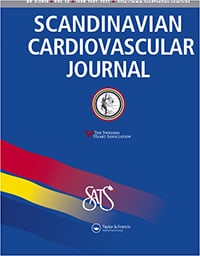Effect of oxygen therapy on chest pain in patients with STEMI: Results from the randomized SOCCER trial

Objective
Oxygen (O2) have been a cornerstone in the treatment of acute myocardial infarction. Studies have been inconclusive regarding the cardiovascular and analgesic effects of oxygen in these patients. In the SOCCER trial, we compared the effects of oxygen treatment versus room air in patients with ST-elevation myocardial infarction (STEMI). There was no difference in myocardial salvage index or infarct size assessed with cardiac magnetic resonance imaging. In the present subanalysis, we wanted to evaluate the effect of O2 on chest pain in patients with STEMI.Design
Normoxic patients with first time STEMI were randomized in the ambulance to standard care with 10 l/min O2 or room air until the end of the percutaneous coronary intervention (PCI). The ambulance personnel noted the patients´ chest pain on a visual analog scale (VAS; 1-10) before randomization and after the transport but before the start of the PCI, and also registered the amount of morphine given.Results
160 patients were randomized to O2 (n = 85) or room air (n = 75). The O2 group had a higher median VAS at randomization than the air group (7.0 ± 2.3 vs 6.0 ± 2.9; p = .02) and also received a higher median total dose of morphine (5.0 mg ± 4.4 vs 4.0 mg ± 3.7; p = .02). There was no difference between the O2 and air groups in VAS at the start of the PCI (4.0 ± 2.4 vs 3.0 ± 2.5; p = .05) or in the median VAS decrease from randomization to the start of the PCI (−2.0 ± 2.2 vs −1.0 ± 2.9; p = .18).Conclusion
Taken together with previously published data, these results do not support a significant analgesic effect of oxygen in patients with STEMI.
Ardavan Khoshnood, Mahin Akbarzadeh, Marcus Carlsson, David Sparv, Pallonji Bhiladvala, Arash Mokhtari, David Erlinge, Ulf Ekelund
2018
Scandinavian Cardiovascular Journal, 52(2):69-73
